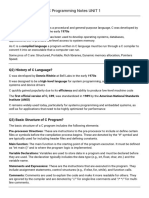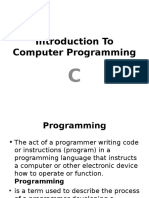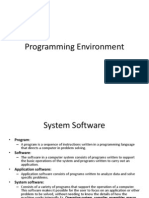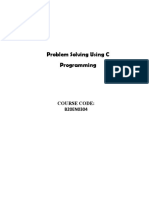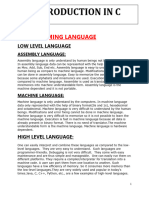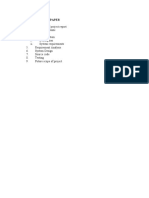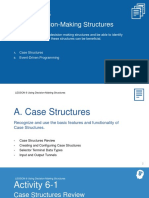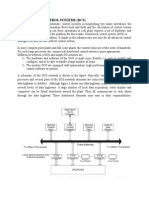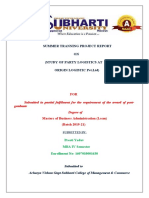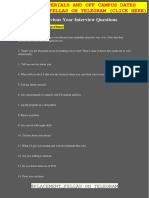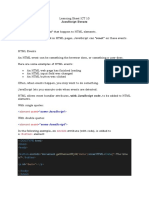0% found this document useful (0 votes)
11 views36 pagesIntroduction To C Programming
The document provides an introduction to the C programming language, detailing its history, features, and execution process. Developed by Dennis Ritchie in 1972, C is a general-purpose programming language used for system and application software, known for its efficiency and portability. It also covers the structure of a C program, types of programming languages, and the roles of compilers, interpreters, assemblers, linkers, and loaders in the execution of C code.
Uploaded by
jayanthv040906Copyright
© © All Rights Reserved
We take content rights seriously. If you suspect this is your content, claim it here.
Available Formats
Download as PDF, TXT or read online on Scribd
0% found this document useful (0 votes)
11 views36 pagesIntroduction To C Programming
The document provides an introduction to the C programming language, detailing its history, features, and execution process. Developed by Dennis Ritchie in 1972, C is a general-purpose programming language used for system and application software, known for its efficiency and portability. It also covers the structure of a C program, types of programming languages, and the roles of compilers, interpreters, assemblers, linkers, and loaders in the execution of C code.
Uploaded by
jayanthv040906Copyright
© © All Rights Reserved
We take content rights seriously. If you suspect this is your content, claim it here.
Available Formats
Download as PDF, TXT or read online on Scribd
/ 36


















